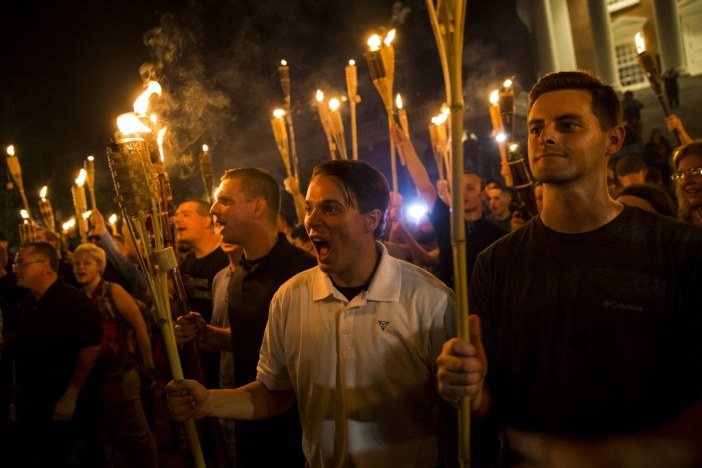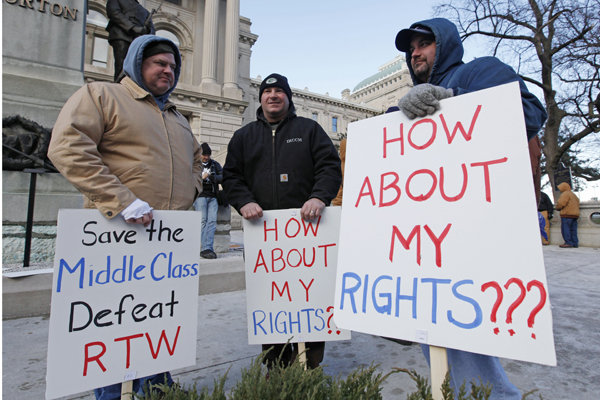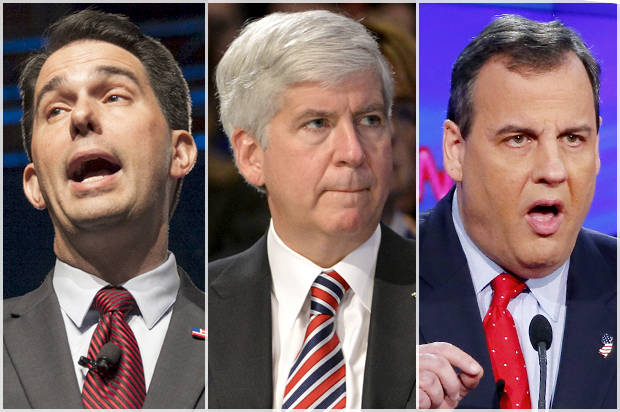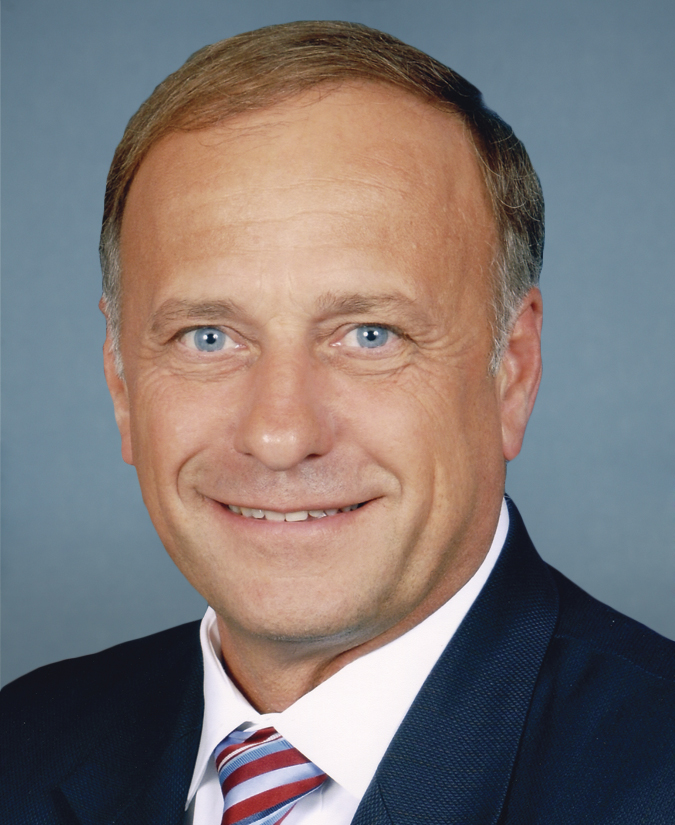
Donald Trump is on his campaign, as President of the United States, to turn back the clock. By now, we already know the phrase “Make America Great Again,” which has adorned umpteen baseball caps and bumper stickers of Trump supporters—and which may also be borderline unpatriotic by insisting that the country isn’t great when it already may be. Many of Trump’s executive orders and appointees have targeted Obama-era regulations with the intention of rolling them back, making a broad appeal to industry leaders, especially those in the banking/financial, fossil fuels, and telecommunications fields. In particular, Attorney General Jeff Sessions—who, if he were any more of a dinosaur, he’d be staring down Chris Pratt in Jurassic World—has been right behind Donald Trump in the quest to hurtle the nation back in time by decades. For one, Sessions, continuing his Reefer Madness-esque rhetoric from his tenure as a U.S. senator, has made a target of marijuana, and even commissioned a task force to look into possible actions to take regarding the drug’s legality at the state level. Which, it should be noted, does not recommend any actions be taken. Sessions also has toed the Trump line on immigration, recently identifying supposed “sanctuary cities” from which federal funding might be withheld, including, for whatever reason, Baltimore, as well as that of crime enforcement and “cracking down” on illusory rampant lawlessness, favoring reduced restrictions on police forces and sending more people to prison. Every strongman needs henchmen to do his bidding, and Jeff Sessions vis-à-vis Pres. Trump fits this description to a T.
In line with the notion of “making America great again” and returning the country back to a nameless, mythical time in which it had no problems and the streets were paved with gold on the backs of cheap immigrant labor, and commensurate with Jeff Sessions’ own racist tendencies, the Department of Justice recently indicated its desire to pursue an investigation into “race-based discrimination” in college admissions practices. That’s discrimination against whites, mind you. Obviously, this re-ignites the debate over affirmative action that has dogged discussion of race relations, not to mention class warfare, as it intersects with the sphere of higher education. Ira Katznelson, political science and history professor at Columbia University, president of the Social Science Research Council, and author of a freaking book on affirmative action—so, needless to say, someone who might have some insight into this subject—wrote a piece for The New York Times which specifically addresses the Justice Department’s memo seeking an inquiry into discrimination in recruitment at colleges and universities.
Per Prof. Katznelson, this focus by the DOJ on affirmative action in higher education is a distraction from the systemic affirmative action backed by the federal government since the Great Depression which has largely benefited whites. Indeed, New Deal- and Fair Deal-era reforms addressed/established various social welfare programs which helped create a “modern middle class,” but the machinations of Southern Democrats and the long reach of Jim Crow made it so this new middle class was not an inclusive one. In fact, they specifically disenfranchised blacks and Mexican-Americans by excluding certain classes of laborers which were predominant to people of color from eligibility for benefits . What’s more, the ripple effects of these racist exclusions are still being felt today in terms of ever-widening gaps in income, opportunity and wealth inequalities along racial lines. In other words, Jeff Sessions and his ilk are confronting admissions policies at institutions of higher education and vague notions of unfairness under the assumption that there is a level playing field among larger socioeconomic factors at their intersection with race. Knowing our history and looking at the evidence, however, this is far from true.
Besides being on the wrong side of history, arguments about the unfairness of affirmative action are part of a worldview highly correlative with that of Trump supporters that appeals to diversity are a hindrance to the success of hard-working white people and create a false sense of equality between people of different races. Sean McElwee, whose analysis has been featured here on United States of Joe before, plotted out back in February in a piece for Salon how Trump’s crowd, ever wont to assail liberals for being a bunch of “snowflakes” dependent on safe spaces and trigger warnings, tend to claim victimhood in their own right. Citing reported data from the 2016 American National Election Studies pilot survey, McElwee notes how respondents who favored Donald Trump were much more likely to agree with statements that Christians face “a great deal” of discrimination and that the federal government treats blacks “much better.” This phenomenon has been termed white victimhood, and for Sean McElwee, it is the byproduct of perceived discrimination when the loss of privilege makes equality feel like something is being taken away. McElwee closes his essay with these thoughts:
Trumpism is a movement built around the loss of privilege and perceived social status and a desire to re-create social hierarchy. It is one that requires its adherents to live in a state of constant fear and victimization. This mythology requires extensive ideological work and media filtering to remain true. Conservatives must create an ideological bubble in which crime is out of control (instead of hovering near historic lows), the rate of abortion is rising (instead of falling), refugees are committing terrorist attacks en masse (they aren’t at all) and immigrants are taking jobs (it’s the capitalists), all while the government is funneling money to undeserving black people (black people receive government support in accordance with their share of the population, despite making up a disproportionately large share of the poor). Conservatives, and many in the general public, believe that Muslims and immigrants (both legal and unauthorized) make up a dramatically larger share of the population than they actually do.
At the same time, the right has created a caricature of their opponents on the left. In this imagined caricature, the left is sensitive to being “triggered” at every corner, but also capable of unspeakable political violence. The activist left are “snowflakes” on one hand, and brutal killers on the other. In reality, political violence has long been a tactic of the right, from the labor violence that left thousands of workers dead to lynchings to brutality against peaceful protesters inflicted by corporate security and police to the harassment of women seeking abortion, the destruction of abortion clinics and the assassination of doctors who provide abortions. The rhetoric of victimization has costs — white supremacists are committing unspeakable violence to combat the perceived threat of immigrants, Muslims and people of color. For the next four years, we are likely to have a government driven by perceptions of white Christian victimhood.
“Trumpist” white victimhood, to put it bluntly, feeds on promulgated falsehoods that cater to deeply-held prejudices held by those persons who wave its banner. Most disturbingly, this deception-fueled ideology has the potential to become dangerous in the wrong hands, as it has in the past. Once more near the forefront and emboldened by Donald Trump’s electoral victory, white supremacists—who are not the entirety of Trump’s base, it should be stressed, but a significant subset regardless of their size—are more visible and are acting more recklessly than they did during Barack Obama’s tenure or even George W. Bush’s stay in the White House. With Trump at the helm, all but sanctioning the violence and unrest already encouraged by a us-versus-them mentality, the threat faced by all Americans, especially those of color, is a clear and present one.
Concerns voiced by white people about discriminatory practices related to affirmative action in college admissions policies are not something new to the Trump-Sessions brain trust. Much as Donald Trump’s concessions to the United States’ racist and xenophobic underpinnings are not a starting point, but rather an outgrowth of a resentment among white Americans to changing cultural and population trends, the Department of Justice’s reservations about affirmative action are variations on the same theme. In December of 2015, this issue made it all the way to the U.S. Supreme Court. Per the case, Abigail Fisher’s contention was that she was denied acceptance to the University of Texas back in 2008 because she is white and despite being more qualified than minority candidates for available slots. As you might imagine, failing to garner acceptance at UT did not severely impair Fisher’s ability to secure a quality education; by the time her case made it all the way to the Supreme Court a second time, she had already graduated from another institution.
The case was eventually and narrowly decided four to three in 2016 to uphold the ruling of the Court of Appeals for the Fifth Circuit in favor of the university. This was not before public comments were made by the late Justice Antonin Scalia, which were characterized by his dissenters as falling anywhere on the spectrum between outmoded in one’s thinking and morally repugnant. Scalia suggested that minority students with “inferior” credentials may fare better at “a less advanced school, a slower-track school where they do well.” He went on to say that most of the black scientists in the United States did not come from schools like the University of Texas, but “lesser” schools “where they do not feel that they’re being pushed ahead in classes that are too fast for them.” These kinds of lines drew muted gasps from the audience, and perhaps rightfully so given how shockingly antiquated they seemed. Before burying Justice Scalia even further in his grave on this issue, it is worth noting his beliefs likely were grounded in what is known as the mismatch theory, which supposes that minority students will be hurt by affirmative action practices which match them to schools above their academic credentials and will struggle to succeed in this unfamiliar environment. It should also be noted, meanwhile, that numerous studies outside those of Richard Sander and other like-minded scientists have produced results which oppose this theory. For many, this would stand to reason, but it doesn’t hurt to have empirical data to give one’s argument its due weight.
For a significant portion of Donald Trump’s base of support, however, the sense of loss they feel transcends the refusal of the highest court in the United States to effectively abolish the use of consideration of race in admissions. For them, this is but one cog in a machine tuned to greater cultural sensitivity, but with this, a sense that their “cultural identity” is disappearing and the America they know with it. This is the context in which we can place the events of the last few days as they transpired in Charlottesville, Virginia. In a reaction to news that authorities plan to remove a statue of Confederate general Robert E. Lee from a city park, a mob of white nationalists holding torches rallied and marched on the University of Virginia campus. The white nationalist protestors were met by counter-protestors more than twice their number, and as might be expected, violence and unrest ensued when the two groups descended upon one another. Regrettably, people were killed and injured as a direct result of the upheaval in Charlottesville. Heather Heyer, one of the counter-protestors, died after being struck by a vehicle helmed by a man who had a fascination with Adolf Hitler and Nazism, and some 19 others were also struck and injured by the rogue automobile. Two police officers, H. Jay Cullen and Berke M.M. Bates, died as well Saturday in a helicopter crash outside the city.
The response across the country to not only the senselessness of the violence following clashes between the groups of protestors, but especially the very showing of an antagonistic group of white supremacists, was swift and vocal. Irrespective of party affiliation, politicians and non-politicians alike condemned the white supremacists and the hate which fuels them and lent itself to the turmoil in Charlottesville. Vigils were likewise quickly organized and continue to be held across the United States as a show of solidarity against the discrimination inherent in white supremacy and the terroristic nature of their assembly in Virginia this past weekend. In the immediate aftermath, however, the silence from one source on the subject of white supremacy was deafening. Unsurprisingly, that source is President Donald Trump, who only on Monday categorically spoke out against the aims of the Ku Klux Klan, neo-Nazis, and white supremacists. On Saturday, he criticized the violence in Charlottesville, but very generally and somewhat dismissively, referring to the actions of protestors on both sides rather than explicitly naming white supremacist groups. By the time Trump had made his speech on Monday denouncing their hatred, it was too little, too late. He had effectively shown his true colors, and evidently was more interested in lashing out at Merck CEO Kenneth Frazier on Twitter than adequately addressing what happened in Virginia.
With Trump’s refusal to more strongly decry white nationalism in America, outside observers were left to wonder whether it were because he is a coward who doesn’t want to lose the white nationalist vote, or whether he tacitly approves of the white nationalist agenda. Michael D’Antonio, author of a whole book on the subject of Donald Trump, explained in a piece for CNN “why Trump won’t stand up against hate.” In reality, as D’Antonio details, it’s a little of Column A and Column B. On the side of the former, and as we’ve discussed, Trump is waving the banner of “Make America Great Again,” spurring visions of a time before the intensification of the civil rights movement and tapping into this central phenomenon of white victimhood. As for the latter, meanwhile? Trump has evidenced a pattern of bigotry in his own personal and professional life. When the Trump Organization was forced to follow fair housing practices, he invoked the idea of “reverse discrimination.” He once took out full-page ads in newspapers calling for the reinstatement of the death penalty in response to the case against five teenagers and persons of color accused of the rape of a Central Park jogger. (Turns out they were innocent, which DNA testing had to prove after the fact.) He also has—huge shocker!—pointed to affirmative action as an unfair advantage for black students, and has done a poor job of naming black people within his company as executives. Plus, let’s not forget his lingering identity as one of the most outspoken leaders of the “birtherism” movement, as well as his, you know, wholesale diminishment of Mexicans as drug peddlers, rapists, and violent criminals. In short, Donald Trump is not only a coward, but a bully and a bigot. No wonder he failed a test in his response to Charlottesville that he should have aced.
As it must be emphasized, though, Trump’s catering to racists and his own racist attitudes, while they can and should be assailed, are nothing new. The response of many Americans appalled at the events of Charlottesville is something akin to “this is not my America.” Others who condemn the anger, racism and violence marking these events would be apt to point this is, in fact, your America, one built on subjugation of people of color as well as a patriarchal power struggle. While raising these considerations indiscriminately and attacking the other person is a self-defeating prospect, at the core of this drama, the need to discuss these subjects in a productive way is paramount. For too long, we have been reluctant in this country to have a honest dialog about race and associated topics like affirmative action and white privilege. Regardless of who sits in the Oval Office, it is incumbent upon we, the people, to force the issue and raise our voices when silence would otherwise stunt our social progress as a nation.


